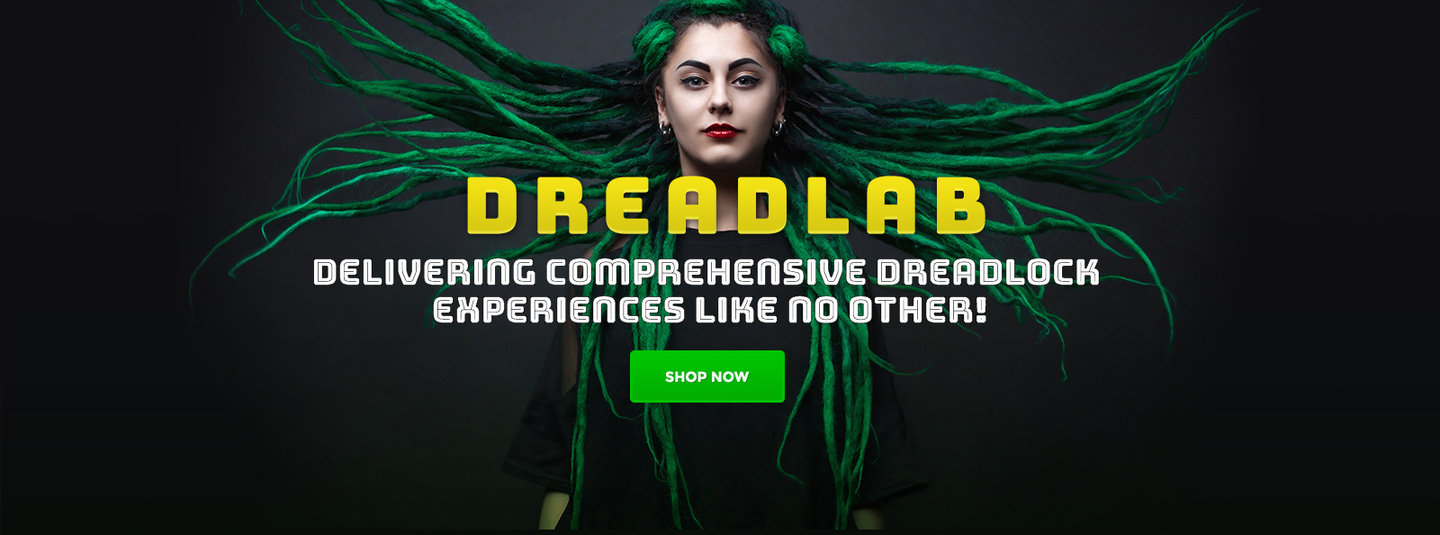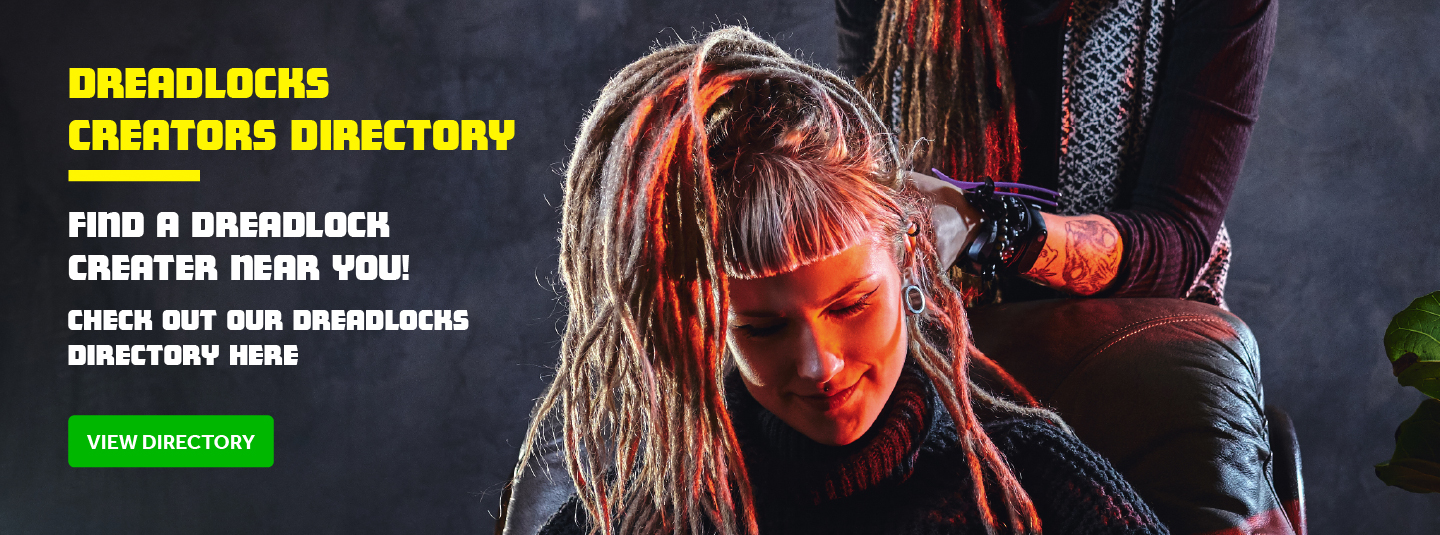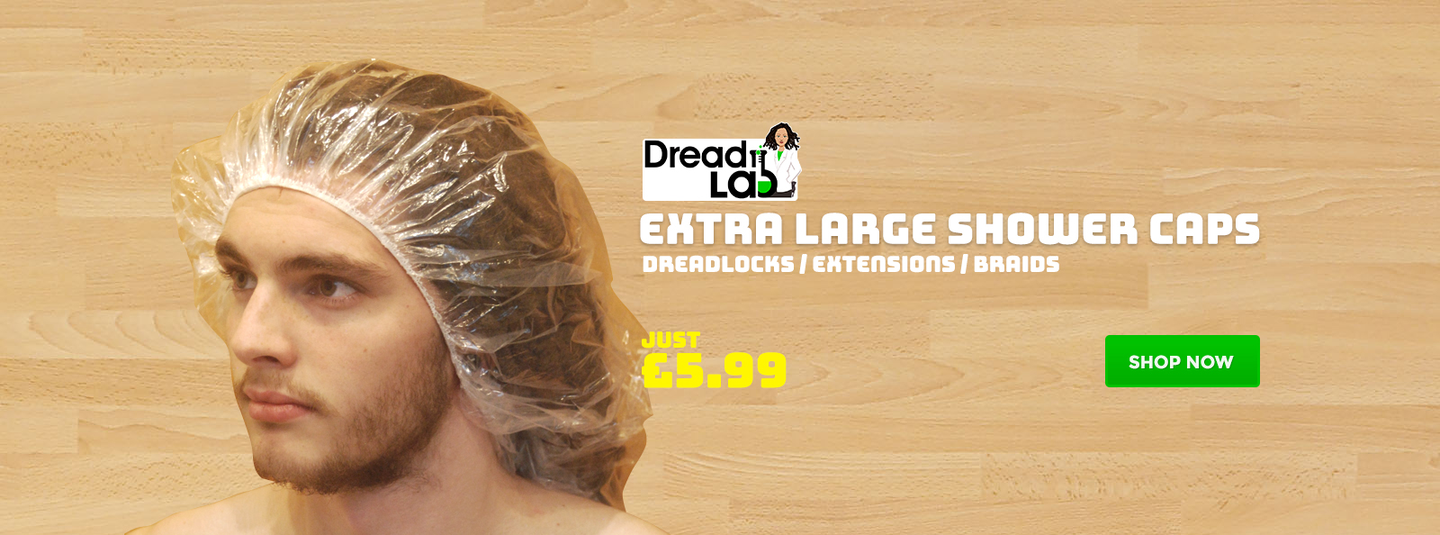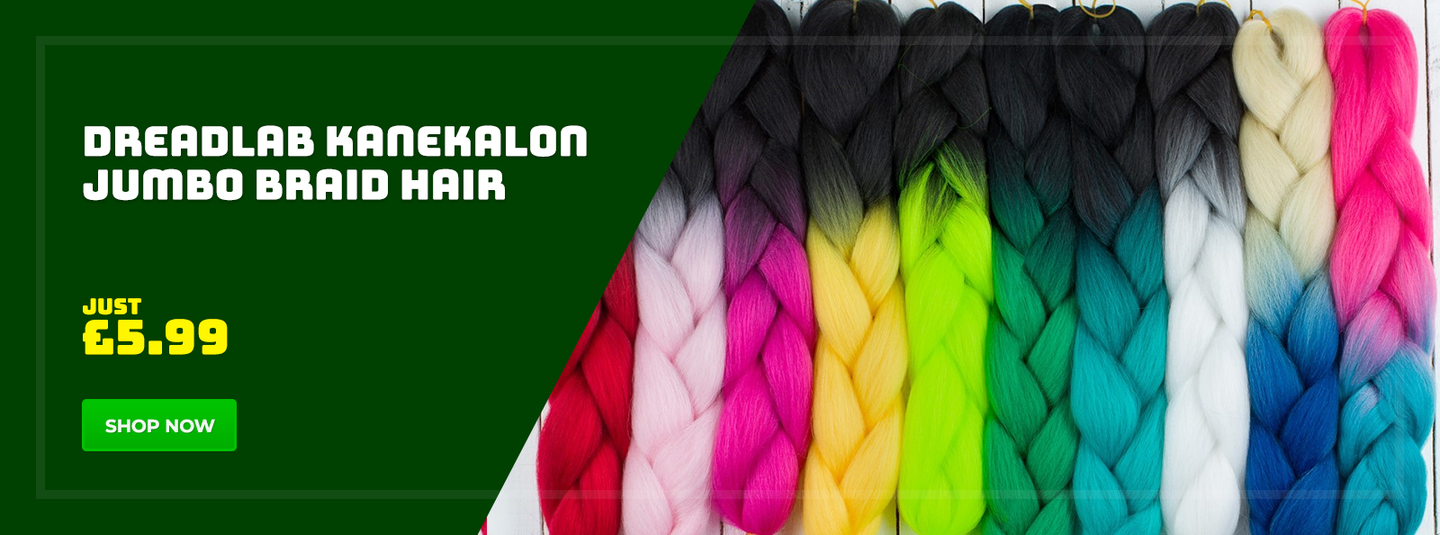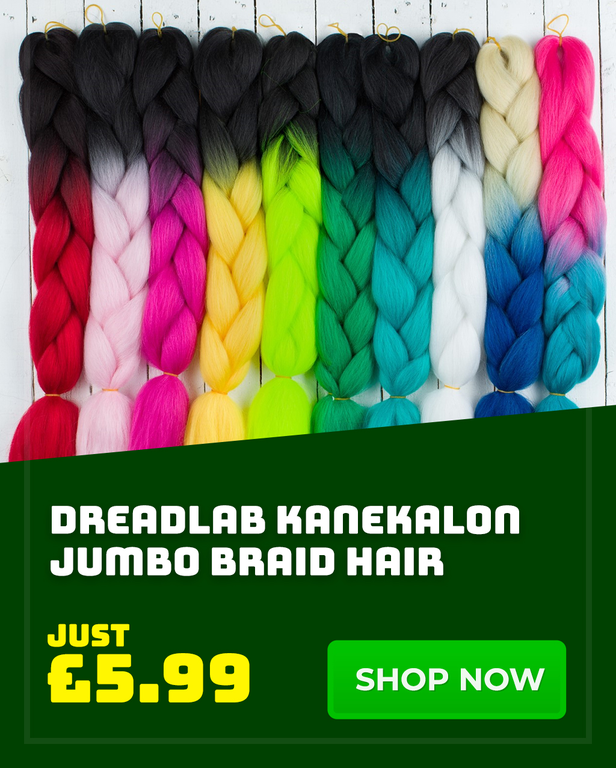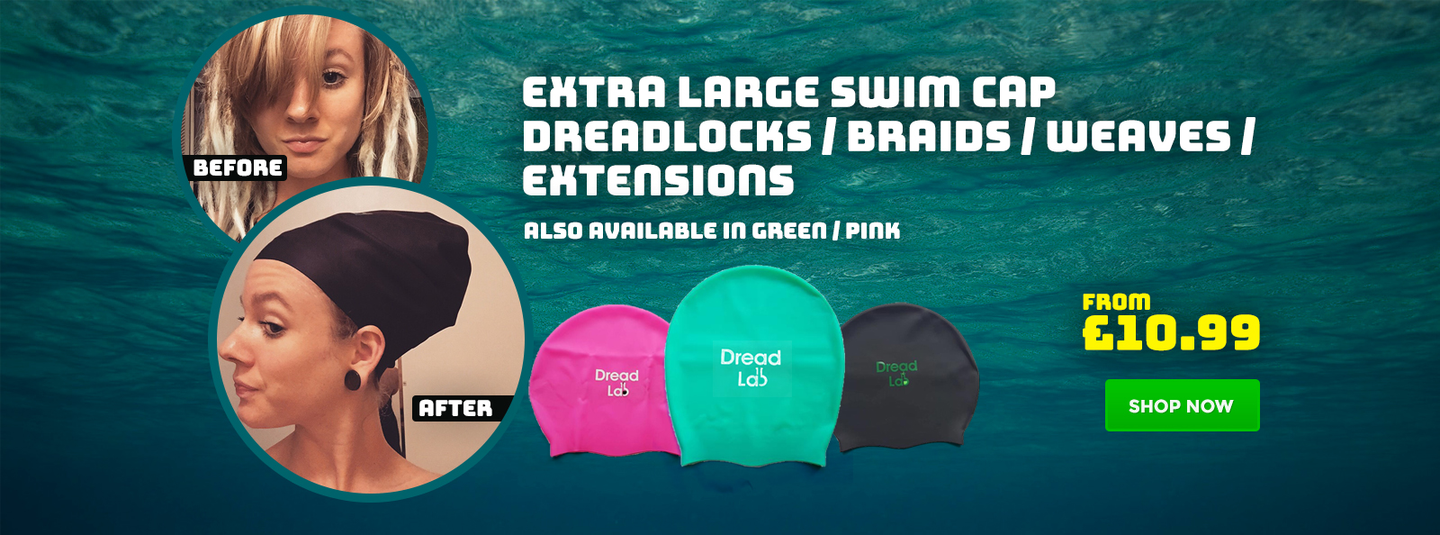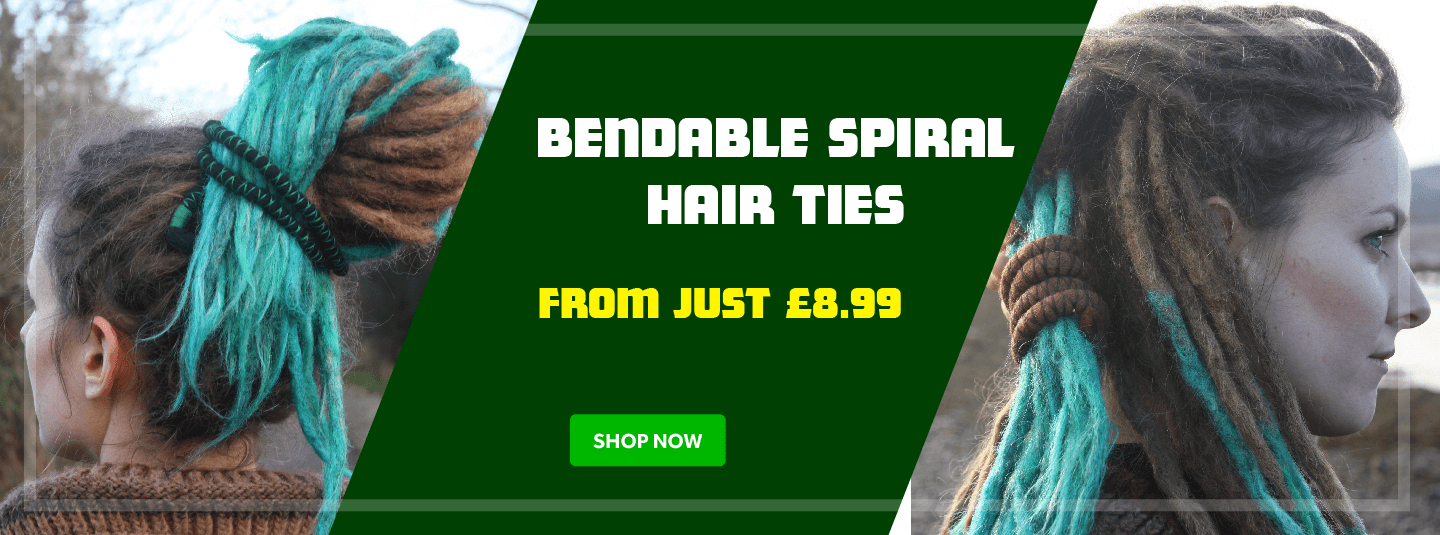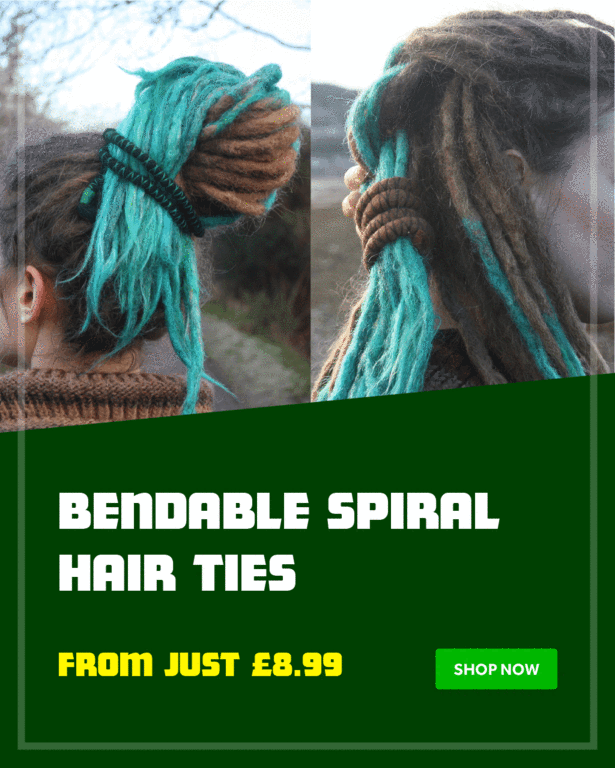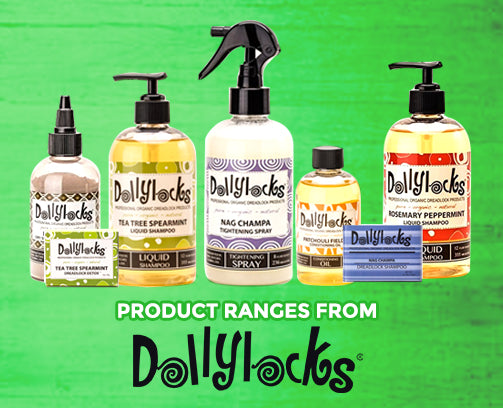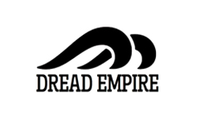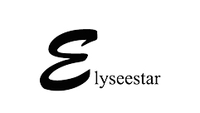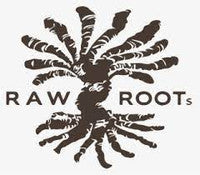Featured Dreadlock Products
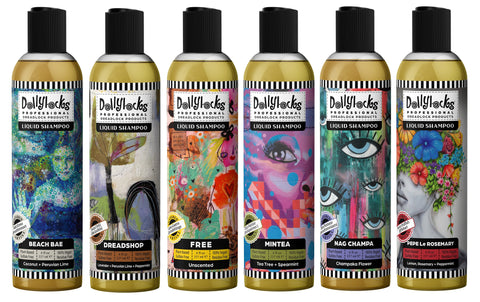
Dollylocks - Liquid Dreadlocks Shampoo (8oz/237ml)
The ALL NEW 2024 product release from Dollylocks! A lightweight pH-balanced clarifying shampoo gently cleanses your scalp and hair, removing buildup, impurities, and excess oil. Rich in essential fatty acids and soothing plant extracts, keeping your dreadlocks squeaky clean, healthy, and tight without stripping hair or leaving residue. Beach Bae: A captivating blend of beachy coconut and vibrant peruvian lime, creating a tropical and refreshing experience. Dreadshop: A delightful blend of lavender, Peruvian lime, and a hint of peppermint essential oil creates a calming, refreshing experienc...
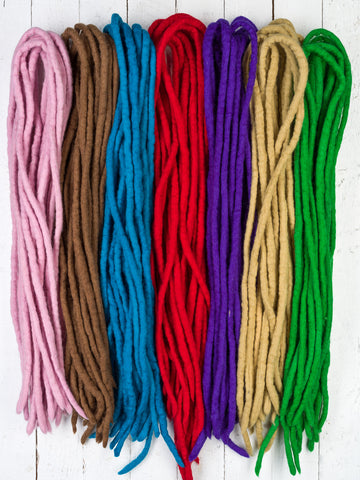
DreadLab - Double Ended Felted Merino Wool Dreadlocks (24"/ 60cm)
Premium Double Ended Felted Merino Wool Dreadlocks – Handmade & Ethical Handmade in Nepal - Premium Ethically source New Zealand Merino Wool! Upgrade your look with luxury-quality wool dreadlocks designed to last. Unlike cheaper alternatives, our dreads stay soft, strong, and beautiful wear after wear. What’s Included ✔️ 10 individual double-ended dreadlocks✔️ Length: 60cm when installed (120cm outstretched) Why Choose DreadLab Wool Dreads? Handmade in Nepal by skilled women artisans – supporting fair wages in Terai & the Himalayas Ethically sourced Merino wool from New Zealand ...
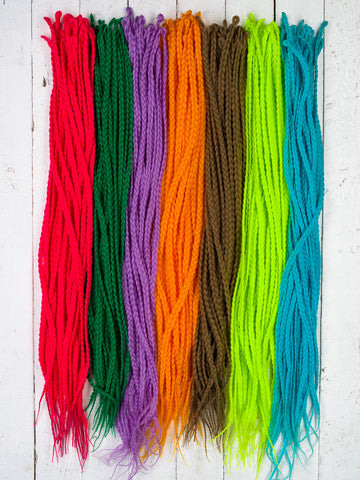
DreadLab - Box Braids Pre-Looped Senegalese Twists Single Ended (24"/ 60cm)
"Pre-Looped Box Braids / Senegalese Twists by DreadLab. Get salon-quality braids in minutes with DreadLab’s pre-looped box braids and Senegalese twists. Made with premium synthetic hair, these braids are soft, lightweight, and designed to last. Perfect for everyday wear, holidays, or special occasions. What’s Included ✔️ 20 individual pre-looped box braids / twists✔️ Length: 60cm✔️ Delivered in custom reusable DreadLab packaging Features & Benefits Pre-looped design – quick and easy to install, saves you time High quality synthetic hair – soft, natural feel Lightweight & brea...
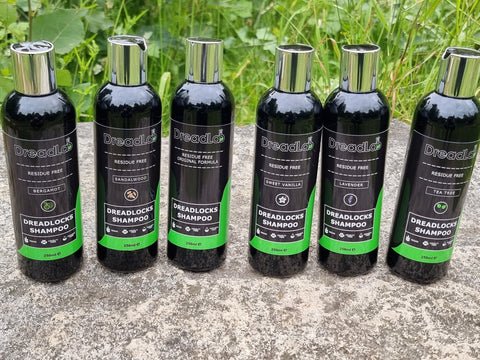
DreadLab - Liquid Dreadlocks Shampoo (250ml) Residue Free
Keep your dreadlocks fresh, clean, and lightweight with DreadLab Liquid Dreadlocks Shampoo – the professional-quality shampoo made specifically for dreadlock care. Crafted with a 100% vegan and cruelty-free formula, this shampoo washes thoroughly without leaving buildup. Designed to work with the unique structure of dreadlocks, it gently removes residue, smooths loose hairs, and leaves your locks feeling firmer, lighter, and more defined. Powerful dreadlocks cleaning without needing many of the widely used and accepted ingredients. ✅ Why Choose DreadLab Shampoo? Residue-Free Formula – cle...
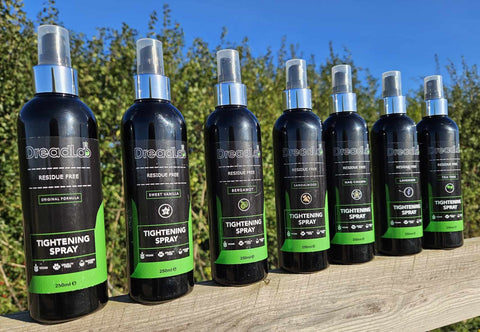
DreadLab - Dreadlocks Tightening Spray (250ml) Residue Free
Vegan, Cruelty Free and 100% Residue Free Formula Looking for the perfect way to tighten and refresh your dreadlocks without buildup?DreadLab’s Dreadlocks Tightening Spray is specially formulated to reduce frizz, tame loose hairs, and strengthen your locks while keeping your scalp hydrated. Unlike many hair products, our water-soluble, residue-free formula washes out completely—leaving nothing behind but fresh, healthy dreadlocks. Why You’ll Love It: 🌱 100% Vegan & Cruelty-Free 🚫 Free from parabens, sulfates (SLS/SLES), soap & palm oil 💧 Residue-Free & pH Balanced for hea...
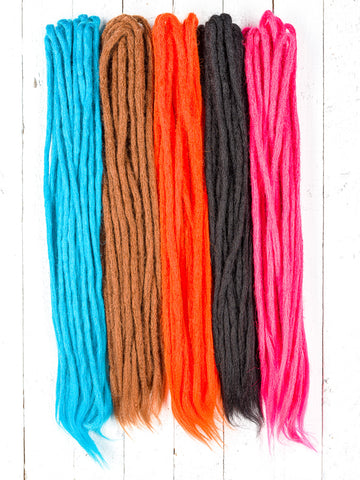
DreadLab - Double Ended Synthetic Dreadlocks (Pack of 10) Crochet Extensions
Get the natural look and durability of handmade Double Ended Crochet Dreadlocks from DreadLab — expertly crafted for effortless installation and long-lasting style. Each dreadlock is fully hand-crocheted from high-quality synthetic fibre, creating soft, realistic, and lightweight extensions that move naturally.These double ended dreadlocks are perfect for achieving volume, length, or a complete dreadlock transformation without committing to permanent locs. Unlike machine-made versions, DreadLab dreadlocks are crocheted throughout, with smooth, natural tapering at both ends — never frizzy or...
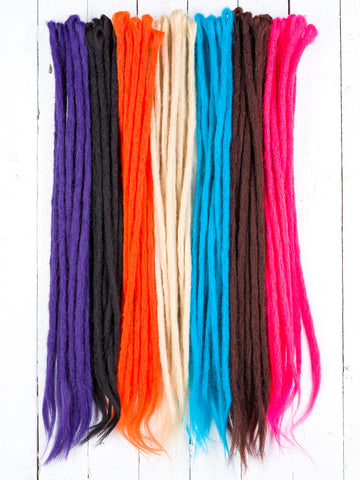
DreadLab - Single Ended Synthetic Dreadlocks (Pack of 10) Crochet Extensions
Upgrade your style with DreadLab’s premium Single Ended Synthetic Crochet Dreadlocks — handmade for a natural, realistic look and lightweight feel. Each dreadlock is carefully hand-crocheted using high-quality synthetic fibre for a soft, authentic texture that looks and moves like natural hair.These single ended crochet dreadlocks are easy to install, reusable, and perfect for adding length, volume, or creating custom dread falls. Unlike mass-produced versions, DreadLab dreadlocks are crocheted right up to the loop with no mini elastic bands — giving a seamless, professional finish. ✨ Key ...
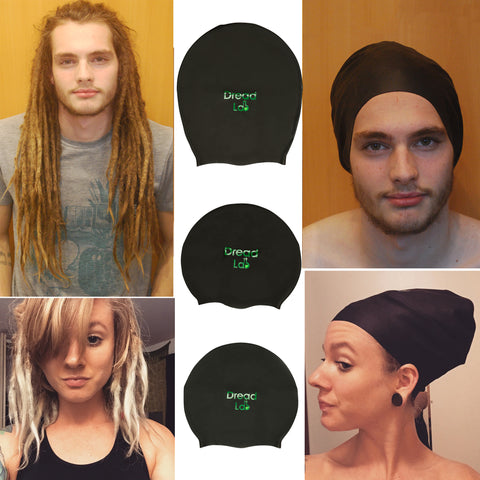
DreadLab - Dreadlocks Large Swim Cap (Multiple Colours and Sizes)
Protect your dreadlocks and braids with DreadLab’s 100% silicone, water-resistant swim cap — specially designed for long, thick, or voluminous hair. Enjoy swimming without worrying about your hair getting soaked.Made from premium-grade silicone, the DreadLab Large Swim Cap is strong, stretchable, and perfectly shaped to accommodate dreadlocks, braids, weaves, extensions, and natural long hair. Available in three sizes for the ideal fit, this cap comfortably stretches over your head, keeping your hair dry and secure while you swim, bathe, or shower. ✨ Key Features 100% high-quality silico...
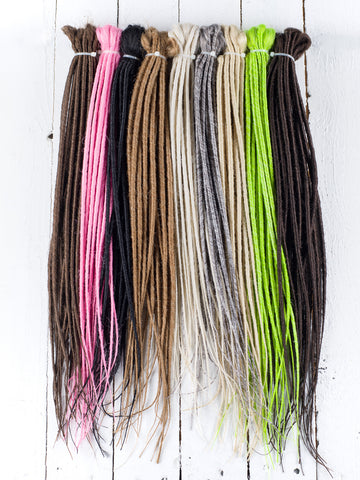
DreadLab - Double Ended Synthetic Dreadlocks (Pack of 10) Backcombed Extensions
"Synthetic dreadlocks extensions by DreadLab. Using a combination of backcombing and twisting to create an authentic looking dreadlock." Add to your look with DreadLab's Double Ended Synthetic Dreadlocks Backcombed Extensions. Crafted with high-quality synthetic hair, these extensions offer an authentic dreadlocked look with a combination of backcombing and twisting techniques. Easy to install, they can be braided into the hair or mounted on the elastic. With custom reusable packaging and available in a variety of colours, DreadLab's double-ended extensions are perfect for creating unique...
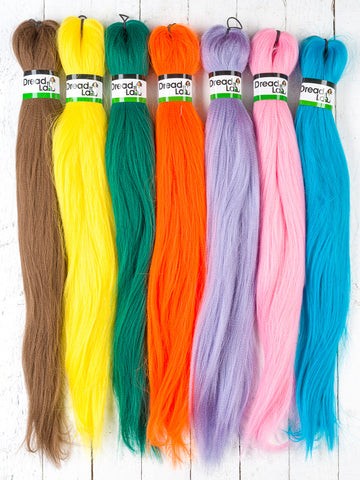
DreadLab - Pre-Stretched Braid Hair Single Tone (26"/ 65cm)
Soft, lightweight, and ready to braid straight from the pack — perfect for all your braiding and hair-creation needs. Upgrade your style with DreadLab Pre-Stretched Braid Hair, crafted from high-quality synthetic fibres for smooth, tangle-free styling. Each pack arrives pre-stretched and tapered, saving you time and effort while giving you a natural, feathered look. Perfect for creating box braids, cornrows, twists, or custom hair designs, this braid hair is soft, lightweight, and easy to manage — whether you’re a professional stylist or styling at home. ✨ Key Features Premium pre-stretc...
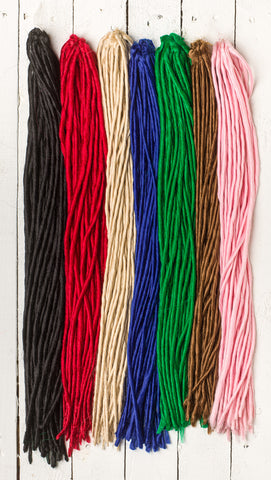
DreadLab - Soft Style Double Ended Synthetic Dreadlocks Twists (Pack of 10)
Lightweight, silky, and easy to install — the perfect soft synthetic dreadlocks for a natural, semi-permanent look. Upgrade your style with DreadLab’s Soft Style Double Ended Synthetic Dreadlocks. Each dread is lightly backcombed and twisted for a soft, smooth texture that feels as good as it looks. Perfect for semi-permanent installs, these dreads are silky, lightweight, and easy to braid directly into your natural hair. ✨ Key Features Soft, silky, and shiny finish – natural-looking dread style Lightweight synthetic hair – comfortable for everyday wear Double ended (DE) – braid-in i...
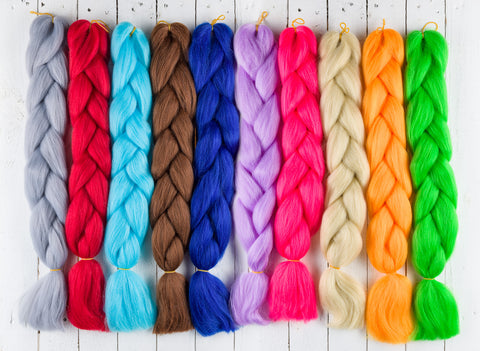
DreadLab - Synthetic Jumbo Braid Hair Single Tone (24"/60cm)
Synthetic Jumbo Braid Hair – Single Tone by DreadLab Elevate your style with DreadLab’s Synthetic Jumbo Braid Hair, made from premium-quality synthetic fibres for a soft, lightweight, and tangle-free experience. Perfect for braiding, plaiting, and dreadlock creation, this versatile hair can be heat-sealed, backcombed, or crocheted to suit your preferred look. Available in 41 stunning single-tone colours, it’s ideal for box braids, cornrows, or DIY synthetic dreadlocks. Each 100g pack offers generous length and volume — measuring 24" / 60cm when folded — and can be blended or layered for cus...
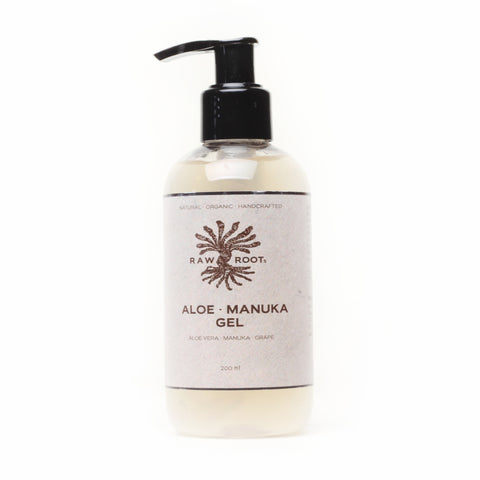
Raw Roots - Dreadlocks Tightening Gel - Aloe Manuka (200ml)
"Natural, Organic and Handmade From Denmark" Aloe Manuka Gel is luxurious gel for frizzy hair, curl and dreadlocks. Certified organic aloe vera provides a firm hold and together with Manuka the hair is nourished and kept healthy. Organic essential oils work antibacterial and provide a fresh smell of sweet lavender and fresh grapefruit. rganic Aloe vera is the main ingredient of our Aloe Manuka Gel and its content equals 80%. Aloe and Manuka relieve itching, helps control dandruff, heal wounds and irritated skin. (Very good for sunburn and sun eczema) How To Use: After washing and towe...
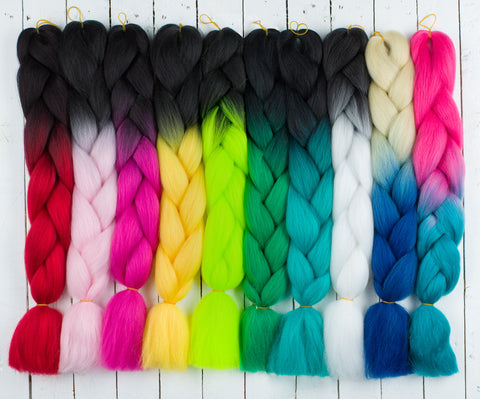
DreadLab - Synthetic Jumbo Braid Hair Two Tone Ombre (24"/60cm)
Synthetic Jumbo Braid Hair – Two-Tone Ombre by DreadLab Add instant colour and dimension to your look with DreadLab’s Two-Tone Ombre Synthetic Jumbo Braid Hair. Crafted from high-quality synthetic fibres, these braids are soft, lightweight, and designed for effortless styling. Each pack blends two complementary shades for a vibrant, natural transition — perfect for bold braids, cornrows, or custom dreadlock creations. Measuring 24" / 60 cm when folded and weighing 100 g per pack, this hair offers the perfect balance of volume, smoothness, and durability. The fibres are easy to backcomb, cro...
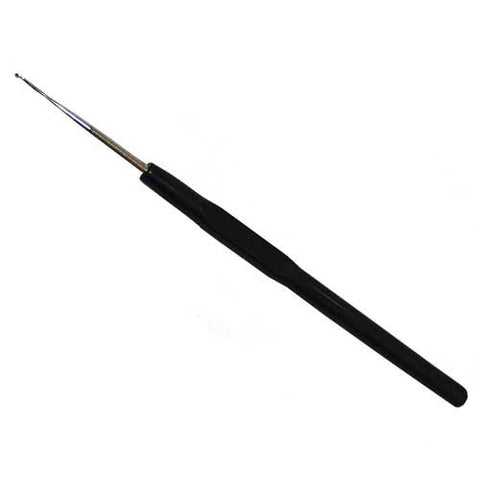
Dready Dreadzz - Dreadlocks Crochet Hook 0.75mm (Loose Hair Fixing Tool)
"Made in the Netherlands" : The Dready Dreadzz 0.75mm crochet hook is an excellent sized hook for tidying dreadlocks. You can tighten the dreadlocks from the inside which helps them to look tight and firm. A crochet hook is also excellent for root maintenance and bringing loose hairs into dreadlocks. The crochet hook can also be used for extending your real dreads. This listing is for the purchase of a single crochet hook
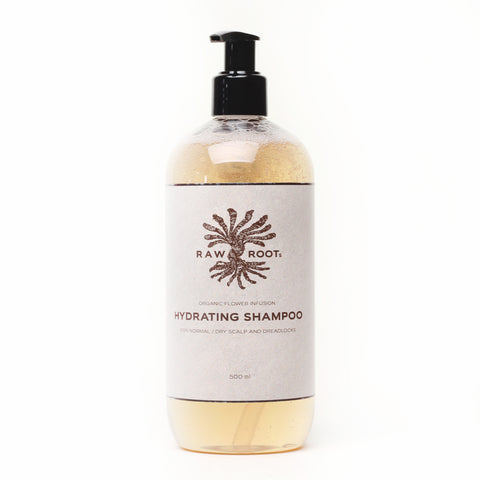
Raw Roots - Dreadlocks Hydrating Shampoo (500ml)
"Natural, Organic and Handmade From Denmark" Based on flower extracts and mild detergents this sulfate free shampoo gently cleanses without drying out the scalp. Revives a dry flaky scalp and leave your hair light, strengthened, super soft and with the scent of summer. Organic plant extracts restore the natural moisture balance, relieves discomfort and itching on the scalp. Hydrolyzed corn and beet extract is a natural moisture boost and protects colour from fading. Organic Comfrey, Chamomile, Lavender and Calendula flower soothes, heals and relieve discomfort and itching of the scalp. ...
New DREADLOCK Arrivals
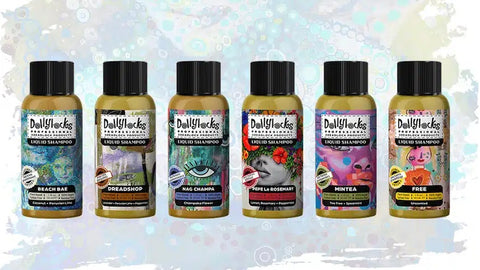
Dollylocks - Liquid Dreadlocks Shampoo Trial Size (1oz/30ml)
The ALL NEW 2024 product release from Dollylocks! Want to try a scent but not commit to a full bottle? or need a small travel sized bottle? You got it! A lightweight pH-balanced clarifying shampoo gently cleanses your scalp and hair, removing buildup, impurities, and excess oil. Rich in essential fatty acids and soothing plant extracts, keeping your dreadlocks squeaky clean, healthy, and tight without stripping hair or leaving residue. Beach Bae: A captivating blend of beachy coconut and vibrant peruvian lime, creating a tropical and refreshing experience. Dreadshop: A delightful blend of l...
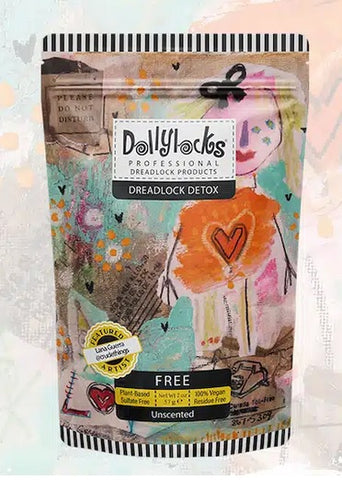
Dollylocks - Dreadlocks Detox (2oz/57g)
The ALL NEW 2024 product release from Dollylocks! A pH-balanced deep purification process to detox dreadlocks, eliminating impurities, buildup, and debris. Our specialized formula targets residue from products and environmental pollutants, addressing issues shampooing alone cannot remove. Unscented for a neutral experience, detoxing impurities from your dreadlocks gently and effectively. Recommendations: 1 packet for young dreadlocks, 2 packets (rinse, wash & repeat) for mature dreadlocks Directions: Add Detox to a receptacle filled with 2-3 gallons of warm water. Once completely dissol...
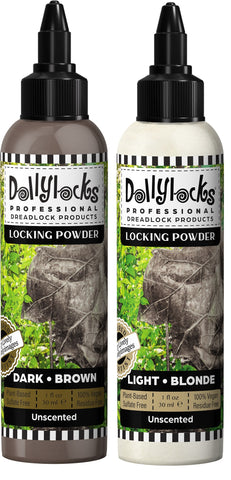
Dollylocks - Dreadlocks Locking Powder (1oz/30ml)
The ALL NEW 2024 product release from Dollylocks! Stimulating, safe, and effective to remove impurities and excess oil while naturally plant-based and mineral-rich. A combination of plant-based dry ingredients designed to absorb excess oil, stimulate the scalp, and lock up loose, unruly hair. Perfect for any hair type providing ‘grip’ during dreadlock maintenance. Your scalp will feel refreshed, your locs tight, and your oily hair a thing of the past! Dark - Brown: Perfect for darker colour dreadlocks Light - Blonde: Suitable for lighter dreadlocks! Directions: Lightly dust onto roots or...
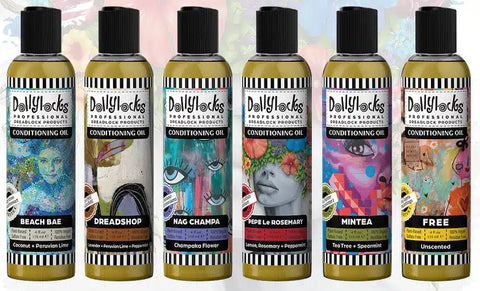
Dollylocks - Dreadlocks Conditioning Oil (4oz/118ml)
The ALL NEW 2024 product release from Dollylocks! A perfect oil blend that mimics your scalp’s natural sebum to nourish, revitalize, strengthen, and renew providing moisture to restore and alleviate dry, itchy scalp. Use while styling as a leave-in for optimal hair and scalp health. Beach Bae: A captivating blend of beachy coconut and vibrant peruvian lime, creating a tropical and refreshing experience. Dreadshop: A delightful blend of lavender, Peruvian lime, and a hint of peppermint essential oil creates a calming, refreshing experience. Mintea: A refreshing blend of tea tree and spearmin...
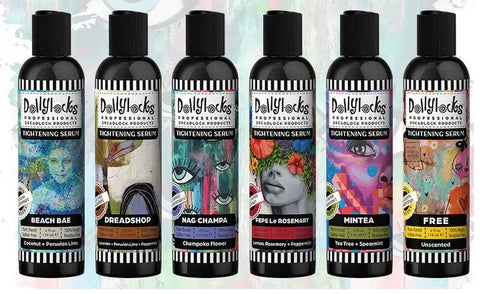
Dollylocks - Dreadlocks Tightening Serum (8oz/237ml)
The ALL NEW 2024 product release from Dollylocks! A ‘flake-free’ nourishing treatment with coconut water and aloe vera to tame loose flyaways while keeping hair hydrated and nourished, improving hair elasticity to promote repair from elemental or chemical damage. Effortlessly tightens dreadlocks at any stage, with residue-free hold for all hair types and textures. Beach Bae: A captivating blend of beachy coconut and vibrant peruvian lime, creating a tropical and refreshing experience. Dreadshop: A delightful blend of lavender, Peruvian lime, and a hint of peppermint essential oil creates a ...
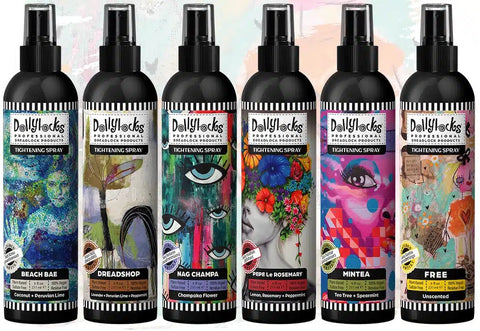
Dollylocks - Dreadlocks Tightening Spray (8oz/237ml)
The ALL NEW 2024 product release from Dollylocks! A unique all-in-one spray combining coconut water, aloe vera, and sea salt to strengthen, tighten, and maintain your locs. Reducing frizz and flyaways while nourishing your hair, creating texture, and accelerating the locking process, especially when palm rolling, for beautiful, healthy dreadlocks at any stage. Beach Bae: A captivating blend of beachy coconut and vibrant peruvian lime, creating a tropical and refreshing experience. Dreadshop: A delightful blend of lavender, Peruvian lime, and a hint of peppermint essential oil creates a ca...
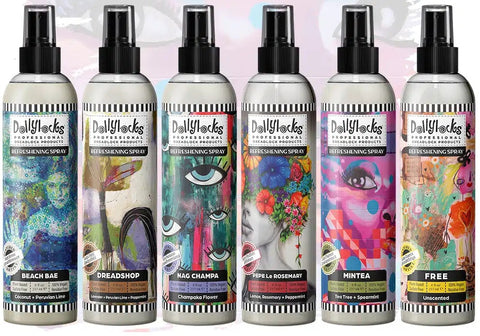
Dollylocks - Dreadlocks Refreshening Spray (8oz/237ml)
The ALL NEW 2024 product release from Dollylocks! An invigorating solution to hydrate, invigorate, and stimulate your scalp and hair with a delightful aroma to eliminate odors in a lightweight, non-greasy formula providing essential moisture to reduce breakage and to keep your locs feeling refreshed all day long! Beach Bae: A captivating blend of beachy coconut and vibrant peruvian lime, creating a tropical and refreshing experience. Dreadshop: A delightful blend of lavender, Peruvian lime, and a hint of peppermint essential oil creates a calming, refreshing experience. Mintea: A refreshing...
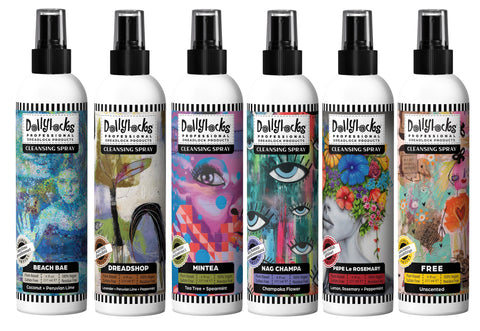
Dollylocks - Liquid Dreadlocks Cleansing Spray (8oz/237ml)
The ALL NEW 2024 product release from Dollylocks! A pH-balanced lightweight, rinse-free shampoo spray gently cleanses the scalp and refreshes your hair. The perfect in-between wash spray to remove excess oil and eliminate dryness with moisturizing extracts, keeping your hair and scalp fresh and rejuvenated until the next wash! Beach Bae: A captivating blend of beachy coconut and vibrant peruvian lime, creating a tropical and refreshing experience. Dreadshop: A delightful blend of lavender, Peruvian lime, and a hint of peppermint essential oil creates a calming, refreshing experience. Mintea...
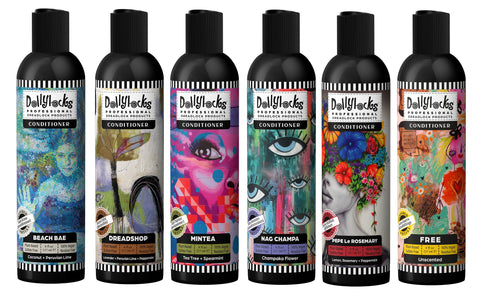
Dollylocks - Liquid Dreadlocks Conditioner (8oz/237ml)
The ALL NEW 2024 product release from Dollylocks! A pH-balanced versatile lightweight conditioner designed to revitalize any hair type or texture; dreadlocks, brushable natural hair, and faux-textures. Formulated to replenishes moisture, strengthens hair, preventing breakage and damage, while leaving your hair feeling healthy, shiny, and soft without any buildup. Beach Bae: A captivating blend of beachy coconut and vibrant peruvian lime, creating a tropical and refreshing experience. Dreadshop: A delightful blend of lavender, Peruvian lime, and a hint of peppermint essential oil creates a c...

Dollylocks - Liquid Dreadlocks Shampoo (8oz/237ml)
The ALL NEW 2024 product release from Dollylocks! A lightweight pH-balanced clarifying shampoo gently cleanses your scalp and hair, removing buildup, impurities, and excess oil. Rich in essential fatty acids and soothing plant extracts, keeping your dreadlocks squeaky clean, healthy, and tight without stripping hair or leaving residue. Beach Bae: A captivating blend of beachy coconut and vibrant peruvian lime, creating a tropical and refreshing experience. Dreadshop: A delightful blend of lavender, Peruvian lime, and a hint of peppermint essential oil creates a calming, refreshing experienc...

DreadLab - Double Ended Felted Merino Wool Dreadlocks (24"/ 60cm)
Premium Double Ended Felted Merino Wool Dreadlocks – Handmade & Ethical Handmade in Nepal - Premium Ethically source New Zealand Merino Wool! Upgrade your look with luxury-quality wool dreadlocks designed to last. Unlike cheaper alternatives, our dreads stay soft, strong, and beautiful wear after wear. What’s Included ✔️ 10 individual double-ended dreadlocks✔️ Length: 60cm when installed (120cm outstretched) Why Choose DreadLab Wool Dreads? Handmade in Nepal by skilled women artisans – supporting fair wages in Terai & the Himalayas Ethically sourced Merino wool from New Zealand ...

DreadLab - Box Braids Pre-Looped Senegalese Twists Single Ended (24"/ 60cm)
"Pre-Looped Box Braids / Senegalese Twists by DreadLab. Get salon-quality braids in minutes with DreadLab’s pre-looped box braids and Senegalese twists. Made with premium synthetic hair, these braids are soft, lightweight, and designed to last. Perfect for everyday wear, holidays, or special occasions. What’s Included ✔️ 20 individual pre-looped box braids / twists✔️ Length: 60cm✔️ Delivered in custom reusable DreadLab packaging Features & Benefits Pre-looped design – quick and easy to install, saves you time High quality synthetic hair – soft, natural feel Lightweight & brea...
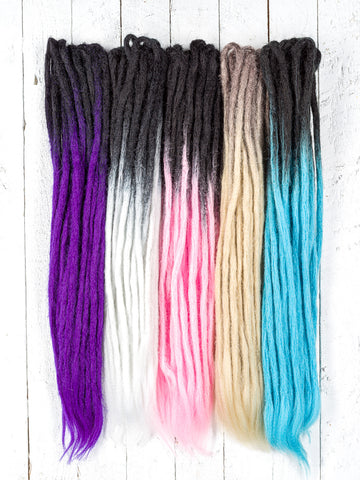
DreadLab - Double Ended Synthetic Dreadlocks (Pack of 10) Ombre Crochet Extensions
Transform your look with DreadLab’s Ombre Double Ended Crochet Dreadlocks — handcrafted for a natural feel, vibrant colour blends, and easy installation. Each dreadlock is fully hand-crocheted from premium synthetic fibre, creating soft, lightweight, and realistic extensions with a seamless ombre (two-tone) colour gradient.These double ended synthetic dreadlocks are ideal for adding instant volume, length, and colour without committing to permanent locs. Unlike mass-produced versions, DreadLab dreadlocks are crocheted all the way through, featuring natural tapering at both ends for a smooth...

DreadLab - Double Ended Synthetic Dreadlocks (Pack of 10) Crochet Extensions
Get the natural look and durability of handmade Double Ended Crochet Dreadlocks from DreadLab — expertly crafted for effortless installation and long-lasting style. Each dreadlock is fully hand-crocheted from high-quality synthetic fibre, creating soft, realistic, and lightweight extensions that move naturally.These double ended dreadlocks are perfect for achieving volume, length, or a complete dreadlock transformation without committing to permanent locs. Unlike machine-made versions, DreadLab dreadlocks are crocheted throughout, with smooth, natural tapering at both ends — never frizzy or...

DreadLab - Dreadlocks Tightening Spray (250ml) Residue Free
Vegan, Cruelty Free and 100% Residue Free Formula Looking for the perfect way to tighten and refresh your dreadlocks without buildup?DreadLab’s Dreadlocks Tightening Spray is specially formulated to reduce frizz, tame loose hairs, and strengthen your locks while keeping your scalp hydrated. Unlike many hair products, our water-soluble, residue-free formula washes out completely—leaving nothing behind but fresh, healthy dreadlocks. Why You’ll Love It: 🌱 100% Vegan & Cruelty-Free 🚫 Free from parabens, sulfates (SLS/SLES), soap & palm oil 💧 Residue-Free & pH Balanced for hea...
Silicone Band Clips Pack of 4
Pack of 4 black plastic clips - Each clip features a silicone band to prevent slippage without pulling on the hair and a gentle hold that won't leave creasing. Aluminum lower arm is rust resistant. Thumb grip has a textured, raised surface for better control and easier handling. Each set comes with one extra replacement band. Approx. 11cm long.
About Our Dreadlocks
Dreadlocks, oftentimes simply called locks or dreads, are a type of hairstyle in which the hair is formed into thick, matted, rope-like strands, either through crochet hooking, backcombing and twisting, or simply neglect. Dreadlocks have been worn throughout history by cultures around the world. You can obtain them in a variety of ways using your natural hair, and you can even use synthetic dreadlock extensions as a semi-permanent style or just to enhance already dreaded hair - there are endless dreadlock styles to choose from. Once your hair is locked, you need to do regular maintenance to keep it healthy, clean and looking great. DreadLab is here to help out with all of your needs. We are a business based in Lincoln, England, sourcing dreadlock hair care and maintenance products from all around the world. We have our own brand of products as well, including synthetic dreadlocks, large swim caps and shower caps. We carry an assortment of special hair care products from reputable and top-selling companies such as Dollylocks, Irie Dread, and DreadyDreadzz. Here you can find exactly what you need to maintain your dreads. From shampoos and tightening sprays to maintenance tools and accessories, DreadLab has got your needs covered.
Dreadlock Maintenance
It is important to maintain your dreadlocks in order to keep them looking nice. We carry everything you need to maintain beautiful hair. Most important and contrary to some rumours, you do need to wash your dreadlocks. They should be washed at a minimum of once per week in order to keep them clean, smelling nice, and free of any foreign objects. Always use a special shampoo that does not leave behind a residue that can build up over time and get trapped in your dreads - making your them stiff and heavy. If you are unsure which shampoos are best to use, check out our selection of cleansing products. We only carry shampoos from reputable brands like Dollylocks and DreadsUK so you can rest assured that they are dreadlock-safe and won’t leave behind an icky residue. It is also very important to thoroughly dry your hair after washing it or any time that your locks get wet. Damp hair can contain mould and will eventually begin to smell like mildew. It is also not good to get them wet in a pool. Chlorine from a swimming pool can wreak havoc on dreads as well. But that doesn’t mean you can’t swim! For the days when you need a shower but don’t have the time to wash and dry your hair, you can use a swim cap or shower cap. If you are feeling like a dip in the pool but don't want to damage your lovely locks, try one of our swim caps. They are a great way to keep your hair dry while you participate in any number of aquatic activities. These can be used in the shower, at the pool, at the beach, or even if you find yourself caught in a rainstorm.
DreadLock Styles
There are a variety of different dreadlock styles. These techniques can often be done by yourself at home. Alternatively you can have them done by a professional. The most popular method (and arguably the best) is using a crochet hook. The hair is separated into sections and a 0.4 - 0.75mm crochet needle is used to dread the loose hair together.
This method requires care to not snap the individual hair strands during dreading. However it results in a great looking dread from day 1. You need to do maintenance every 2-3 months to not overly damage the hair.
Alternative and less recommended methods include:
Neglecting your hair and allowing it to naturally form into dreads due to matting and tangling. It is a lengthy process. Hair needs to be at least 10 inches long for them to start and they can take up to three years to form. When they do form they will be uneven and messy.
Another method for making them is the twist and rip method. This is done by first gathering a section of hair that is to be formed into a lock and dividing it into two parts. Then you twist the two strands together. After that, you split the hair in two parts again, being careful not to split it exactly the same as the first time, and pull the twisted portion tightly to the scalp. Repeat this down the length of the strand. This method allows for more control over the size of the lock and results in tighter more evenly shaped dreads.
The final method is backcomb and wax. For this, sections of hair are backcombed. Then dread wax is added to help stick the dreadlocks together. Again, we do not recommend this as dreadlocks can look waxy and can smell musty over time due to any moisture locked inside with the wax.
Dreadlock Extensions
Synthetic dreadlocks are extensions that you can add to normal hair for an instant dreadlock look. You can also add them to existing locks in order to add length or volume. Added bonus: you can get the extensions to match your natural hair or add some colour. Here at Dreadlab, we offer everything you need to add dreadlock extensions to your hair. They are easy to use by braiding them into your hair and fixing with a small rubber band. Our synthetic dreads come in a variety of brilliant colours, lengths, and styles that are perfect for achieving the look you desire. Do you want your hair to look like dreads but aren't ready to commit to them fully? If so, then extensions are the ideal choice for you. Our synthetic locks can help you to create the perfect look. They also work very well if your natural hair is too short but you want to have beautiful, long, flowing locks right away.
Dreadlocks History
Dreadlocks have been worn by humans throughout history. Mummified remains of ancient Egyptians wearing locked wigs have been discovered by archaeologists. Art from many different ancient civilizations such as the Assyrians, Babylonians and Israelites, depicts individuals with locked hairstyles. The earliest known evidence of the hairstyle occurs in the Vedic texts of Hinduism which tell us that locks were worn by the holy men as a religious practice. It is a hairstyle that has been adopted by many different cultures for many different reasons. For example, they were worn by Spartan warriors when going into battle as a symbol of strength and also by Buddhist monks to symbolize the renunciation of material pursuits. Perhaps the most well-known culture to have adopted the dreadlock hairstyle in modern times is the Rastafarian culture; everyone is familiar with the famous Rastafarian poster-boy, Bob Marley. Recently, dreadlocks have gained popularity in Western culture.
